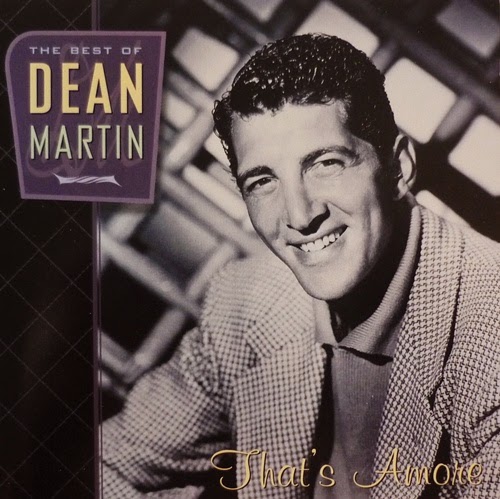Welcome to the weekend! I could
have reviewed this next album two days ago, but I wanted to prolong the
listening experience.
Disc 720 is…. Powerslave
Artist: Iron
Maiden
Year of Release: 1984
What’s up with the Cover? Bow down before the
great and powerful Eddie! Once again Iron Maiden makes their album cover all
about their giant zombie mascot. This time he is playing the role of Egyptian
god-king. Entrance to the Temple of Eddie is in the crotch, which I guess makes
sense for a heavy metal album.
How I Came To Know It: I grew up with this record. When
it came out I was 14 and an avowed Iron Maiden fan. I liked this album so much
I literally bought the shirt – one of those black band t-shirts with the
three-quarter length white sleeves. I loved that shirt.
How It Stacks Up: I have seven Iron Maiden albums and “Powerslave” is
easily the best. Sorry “Number of the Beast” apologists.
Rating: 5 stars
Metal doesn’t get any better than this. Music in
general rarely gets better than this. “Powerslave” is everything you want in a
metal album; overflowing with visceral energy, stellar musicianship, soaring
vocals and thoughtful and intelligent lyrics. I’ve known this album for over
thirty years and it still hits me right in the temple entrance every time I
hear it.
Musically, the band has never been better. The songs are grounded as ever in the masterful bass playing of Steve Harris. On the album’s instrumental (the appropriately titled “Losfer Words”) you can really hear him grooving it out down low, but every single song has great bass moments. Just train your ear to dive under the guitar and vocal onslaught and Harris (along with drummer Nicko McBrain) will be there, delivering fascinating and creative rhythms.
This in turn allows guitarists Dave Murray and
Adrian Smith and vocalist Bruce Dickinson to do their thing. They soar over top
of the groove with majesty and power. The guitar solos throughout “Powerslave”
are top notch, displaying incredible skill and speed, but never sacrificing the
structure of the song to tricks. Every solo is incredible, and on each listen I
dig a different one. This time around I really enjoyed the guitar work on “The Duellists.”
Bruce Dickinson is one of rock and rolls great
voices, and he is never better than on this record. On “Aces High” his singing climbs through the stratosphere even as the
planes in the song duel it out in the Battle of Britain. Every time you think
he can’t hit that next note he hits it and then throttles up another notch.
Listening to it feels just like flying.
“Aces High”
brings me to another reason I’ve always loved Maiden; they sing about awesome
stuff. Long before it was cool to be a geek, Maiden was making history and
fantasy cool for metal heads. “Powerslave” has a great run of crazy song
topics, including:
·
The aforementioned Battle of Britain
·
The Cold War
·
Professional duelists – twice!
·
Pharaohs of ancient Egypt
·
Samuel Taylor Coleridge’s “Rime of
the Ancient Mariner”
“2 Minutes to Midnight” is the Cold War
offering; a brilliant and scathing indictment of how close we came in the
mid-eighties to starting the Third World War. Five years before the Scorpions
sang “Wind of Change” we were buried in the Cold War with no way out. “2 Minutes to Midnight” is full of millions
starving, body bags and children torn in two. It is a hopeless tale from a
hopeless time. In 1984 its raw power had you raising your fist and yelling,
because that was the only way to release the tension.
Every
song has its moments, but I would be remiss not to mention the last two tracks
in particular, “Powerslave” and “Rime of the Ancient Mariner.”
“Powerslave” is the tale of a pharaoh on
his deathbed, realizing for the first time that for all his supposed godhood,
he cannot forestall his own end. The language drips with dread and the tension
born from a man who has absolute power in his hands, but is still a slave to
time. Dickinson sets the stage over a surging guitar riff:
“Into the Abyss I’ll fall – the eye
of Horus
Into the eyes of the night –
watching me go.
Green is the cat’s eye that glows
– in this temple
Enter the risen Osiris – risen again.”
I love
the archaic use of the caesura in the verses, and when the song drops down to
the chorus it is filled with minor chords and menace. Death is coming, and will
leave you but a shadow that haunts the massive edifices you built that now celebrate
your folly.
“Rime of the Ancient Mariner” may be the
song that hooked me on poetry. Lyrically two sections of the song are lifted
straight from the Coleridge poem, but for the most part it is a masterful summary
of the original 625 line poem into a song just under 100. It does so without
losing the tone, themes or emotional power of the original. My only quibble is
they didn’t squeeze in my favourite line from the original, “Hold Off! Unhand me, gray-beard loon!”
“Rime of the Ancient Mariner” is not just
a lyrical masterpiece, it is an epic metal song, that although almost 14
minutes long never loses its focus. It is like a miniature classical
composition, filled with all the things – masterful bass, incredible guitar
licks, and operatic vocals – that makes the whole album great. It could well be
the greatest metal song ever written. It is definitely top five.
“Powerslave” follows 1982’s “Number
of the Beast” and 1983’s “Piece of Mind.” Living up to either of those classic
metal albums would have been a herculean task. “Powerslave” not only matches
them both, it surpasses them.
Best
tracks: all
tracks











